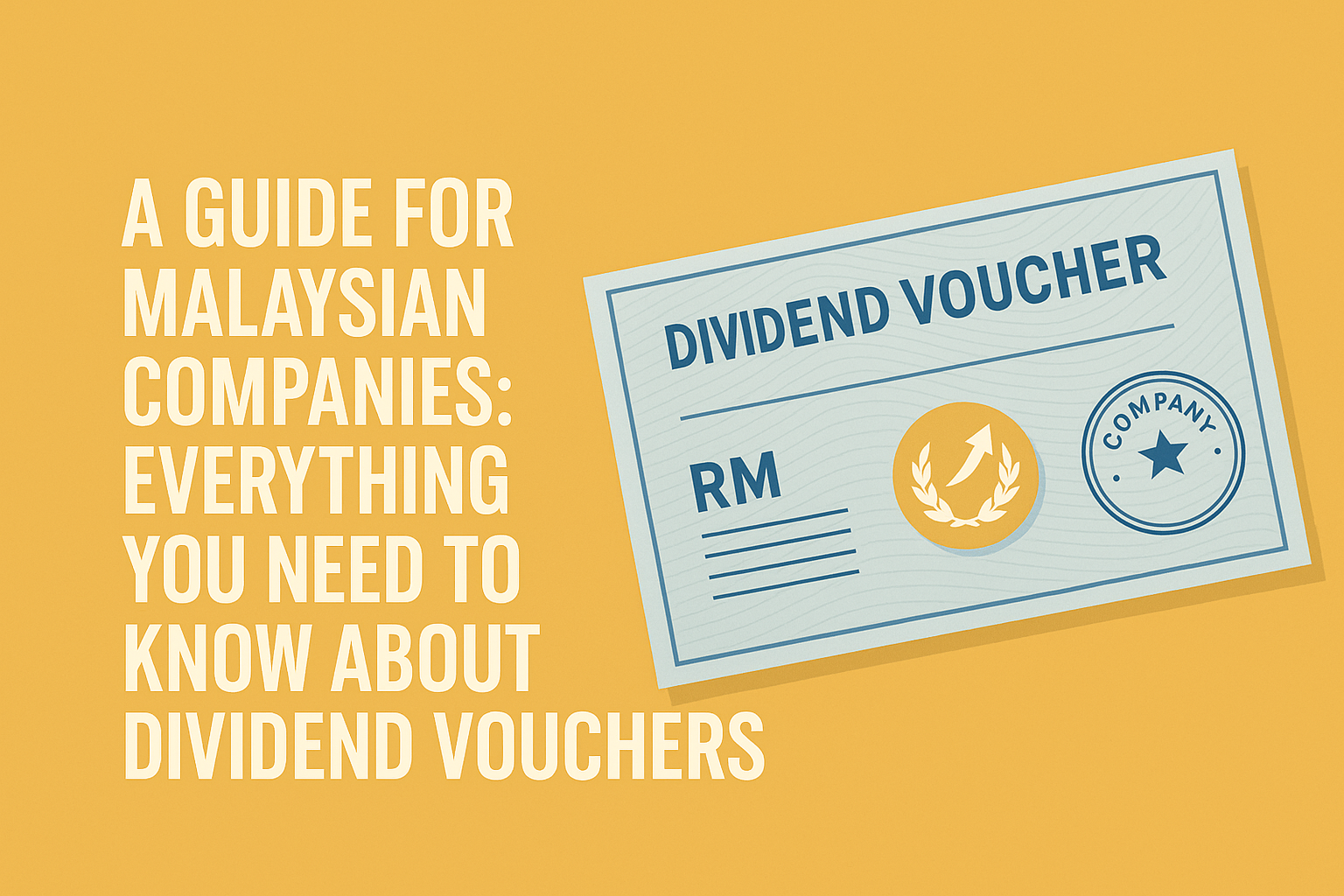Distributing dividends is a key way for a company to reward its shareholders for their investment and confidence. However, this process comes with an important administrative responsibility: the issuance of a Dividend Voucher. This document is more than just a simple receipt; it is a crucial piece of official documentation for both the company and the shareholder.
Many business owners are unsure about the requirements surrounding dividend vouchers. This guide, based on official tax principles and best practices, will explain what a dividend voucher is, why it’s important, and what you must include to ensure you are fully compliant.
1. What is a Dividend Voucher and Why is it So Important?
A dividend voucher is an official written statement issued by a company to its shareholders whenever a dividend is paid. Its primary purpose is to serve as a formal record of the dividend distribution.
In Malaysia, the importance of the dividend voucher is amplified by our single-tier tax system. Under this system, the income tax paid by a company on its profits is considered the final tax. Consequently, the dividends received by shareholders are generally tax-exempt. The dividend voucher serves as the official proof of this tax-exempt income for the shareholder’s personal tax reporting.
The uses of a dividend voucher are clear:
- It is a key supporting document for tax reporting.
- It helps with accurate record-keeping, reconciliation, and audits for the company.
2. Who Must Issue a Dividend Voucher?
The requirement is straightforward and applies broadly:
- All Malaysian Companies that are distributing profits must issue them.
- They must be issued for dividends paid to individual shareholders.
- This applies to both cash and non-cash (in-kind) dividend distributions.
3. What Information Must a Dividend Voucher Include?
To be considered a complete and valid document, every dividend voucher must contain the following key information:
- Gross Dividend Amount: The total dividend declared per share.
- Net Paid/Credited Amount: The actual amount paid to the shareholder.
- Market Value (if in-kind): If the dividend is paid in the form of assets (e.g., property, shares in another company), its market value must be clearly stated.
- Company & Shareholder Information: Full names, addresses, and other identification details of both the company and the shareholder.
- Payment Date: The exact date the dividend was paid or credited.
4. Key Reminders When Issuing Vouchers
- Different Payment Dates = Separate Vouchers: If dividends are paid out on different dates, you must issue separate vouchers for each payment date.
- Reportable Non-Exempt Dividends: Be aware that if an individual receives non-exempt dividends (which are rare and fall outside the single-tier system) exceeding RM100,000, this must be declared as reportable income.
Official Sample Format from LHDN
To assist companies, LHDN has provided a sample format for dividend vouchers to ensure all necessary information is included. While this format is not mandatory, following it is a best practice to ensure compliance.
- Official LHDN Sample Format: https://www.hasil.gov.my/media/o0ggipsp/baucardividen_2025-format.pdf
How SMONE Can Help
Issuing dividend vouchers correctly is a key part of good corporate governance and financial administration. The ability to do so depends on having accurate, up-to-date financial records and a clear understanding of your company’s retained earnings and shareholder information.
SMONE’s Accounting & Bookkeeping services ensure that your company’s financial health is always clear and well-documented. This provides the solid foundation needed to make decisions about profit distribution and to execute the dividend payment process smoothly and in full compliance.
Contact us today to ensure your financial administration supports your company’s growth and shareholder relations.
(Disclaimer)
This article is for general informational purposes and is based on materials published by Wellpointgroup and official LHDN guidance. It does not constitute legal or financial advice. Please consult with your company secretary or a qualified professional for advice on your specific situation.


